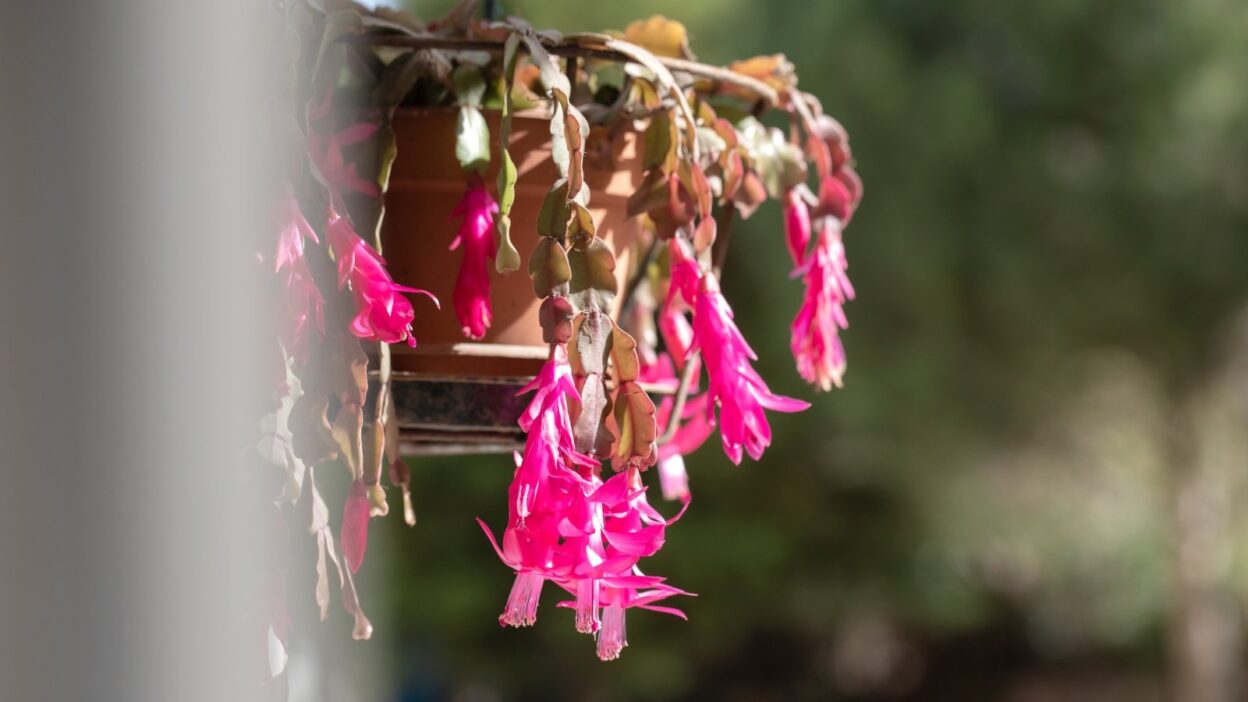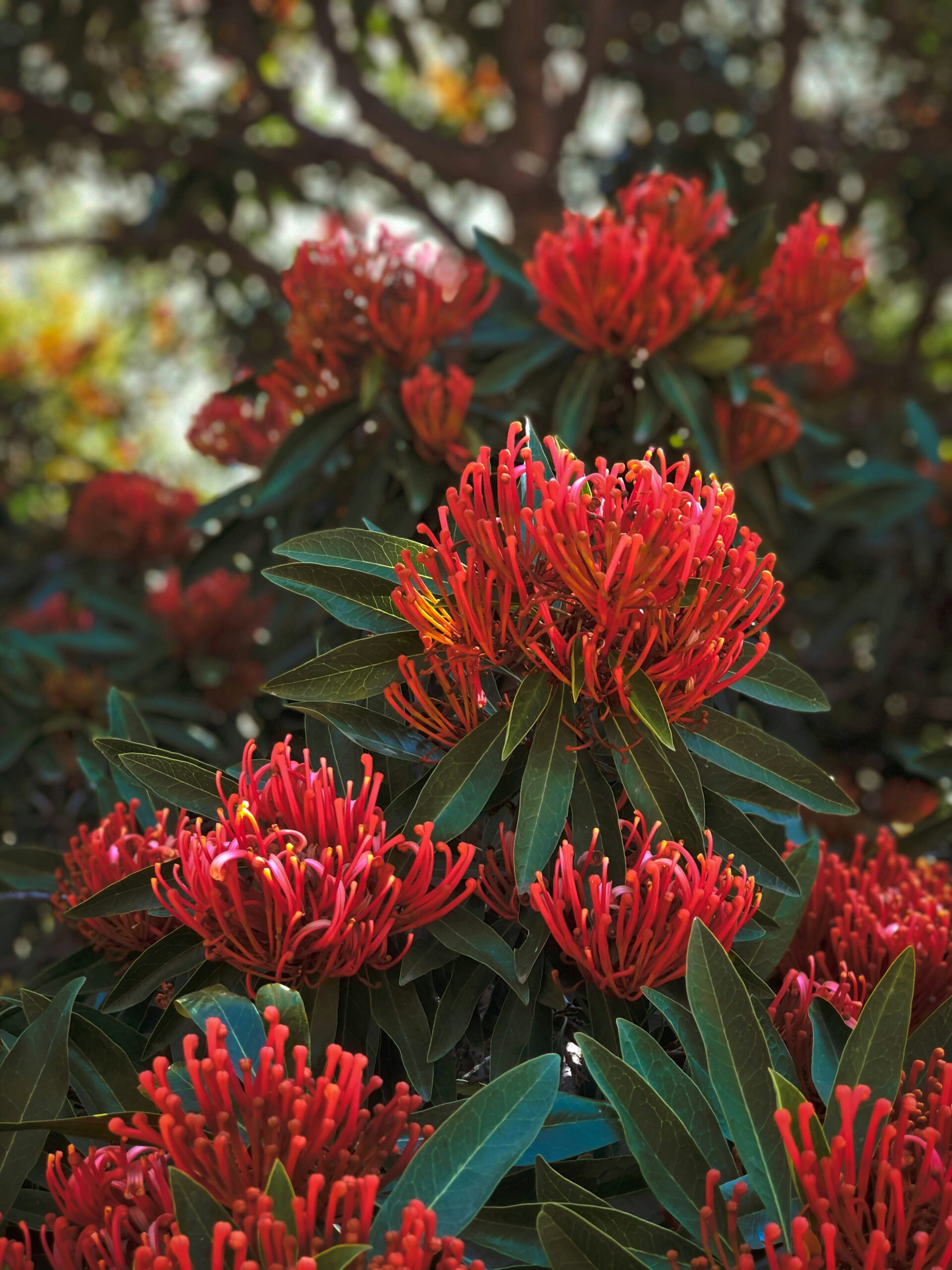Christmas cactus takes center stage now as the floriferous showpieces that blend the succulent and the tropical. Christmas cactus (Schlumbergera x buckleyi) follows November’s Thanksgiving cactus (S. truncata) and continues the floral show through January. Easter cactus (Rhipsalidopsis gaertneri) enters in late winter. All species appreciate the same care and produce spectacular tubular blooms in reds, pinks, purples, and white.
It’s wild to think of these Brazilian rainforest dwellers inhabiting the same plant family as the Saguaro, organ pipe, and prickly pear (Cactaceae). Less xeric than desert-dwelling types, they adapt to more temperate climates like our sun porches and living rooms (fortunately!).
Christmas cactus delights with its colorful plumes against textural “leaves.” These cacti don’t have true leaves but phylloclades, the segments that comprise the stems. Their phylloclades are flat and fleshy, shapely with spines or softly scalloped.
Though they are adaptable houseplants, temperature changes, lighting, or water issues are common causes of stress for Christmas cactus plants. Acclimating to fluctuations in their growing environment, too, may create physical markers. With a few adjustments, the cheery bloomer often rebounds to its easy-care state.
Wilting Leaves
Wilted leaves on a Christmas cactus often indicate watering stressn issues—too much or too little—followed by too much sun or low humidity. In their native rainforests, the epiphytes absorb moisture in the air and experience drenching rains and drying out spells. Their roots don’t sit for prolonged periods in wet soils.
They benefit from moisture in moderation, but sometimes we nurture them too much with excess watering. A good rule of thumb is to water thoroughly when potting media feels dry one inch below the surface. This is usually about every seven to 10 days, depending on the growing environment. A well-draining potting mix is best.
Root Rot
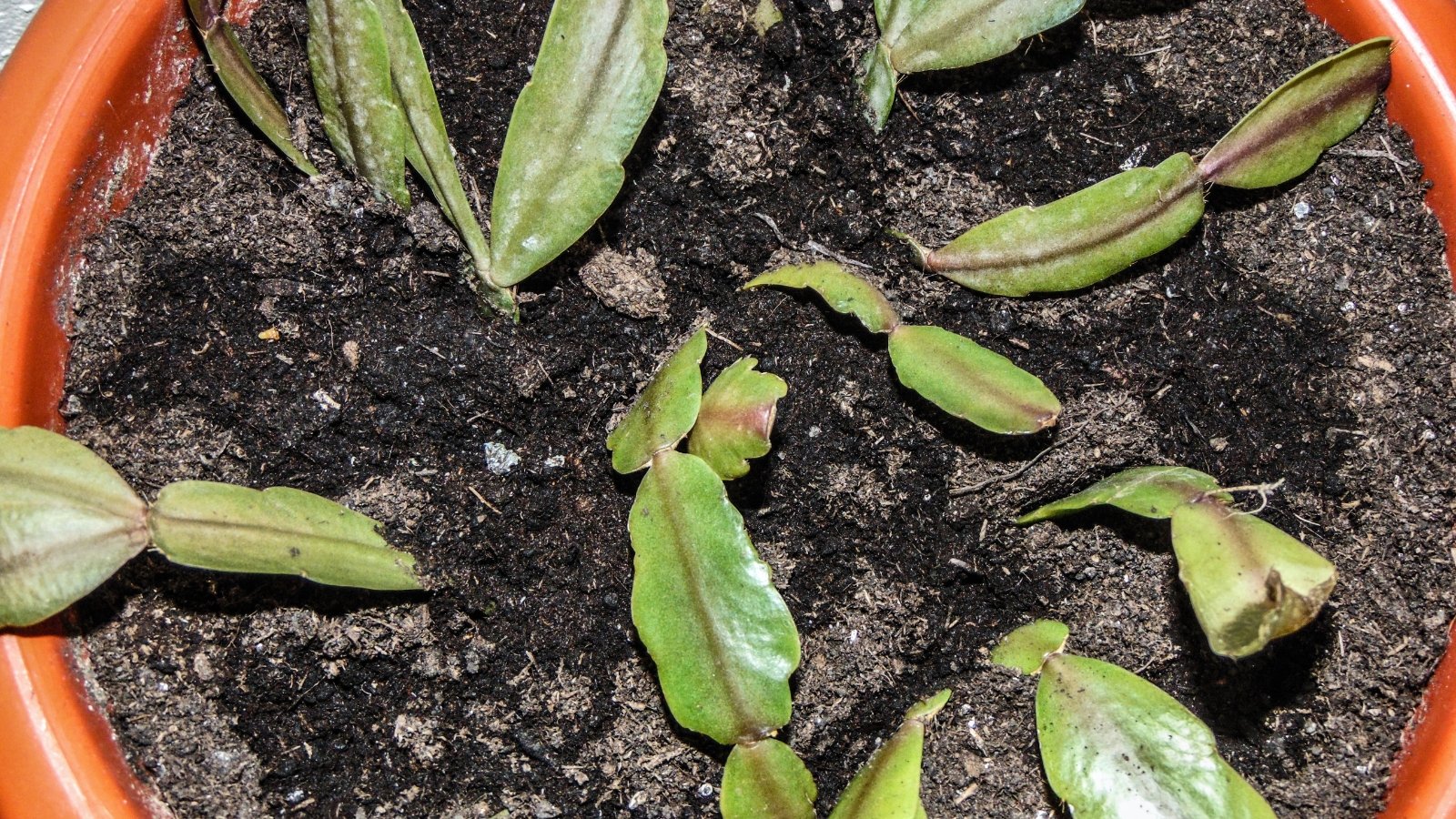
Overwatering damages roots and leads to their inability to uptake moisture and nutrients. Root rot is a fungal disease that proliferates when overwatering creates prolonged saturation. Rot causes the roots to turn brown and mushy. As they decay, they don’t function to support growth.
Cacti in overly soggy media with poor airflow may show yellowing and wilting leaves. Check the roots and clip off any brown, damaged portions.
Replant the tropical in fresh media and water thoroughly to initiate a new regimen. If caught early, you may see rebounding growth. Since Christmas cacti propagate easily from stem cuttings, it may be wise to take a few in case the roots can’t recover.
Shriveled, Thin Stems
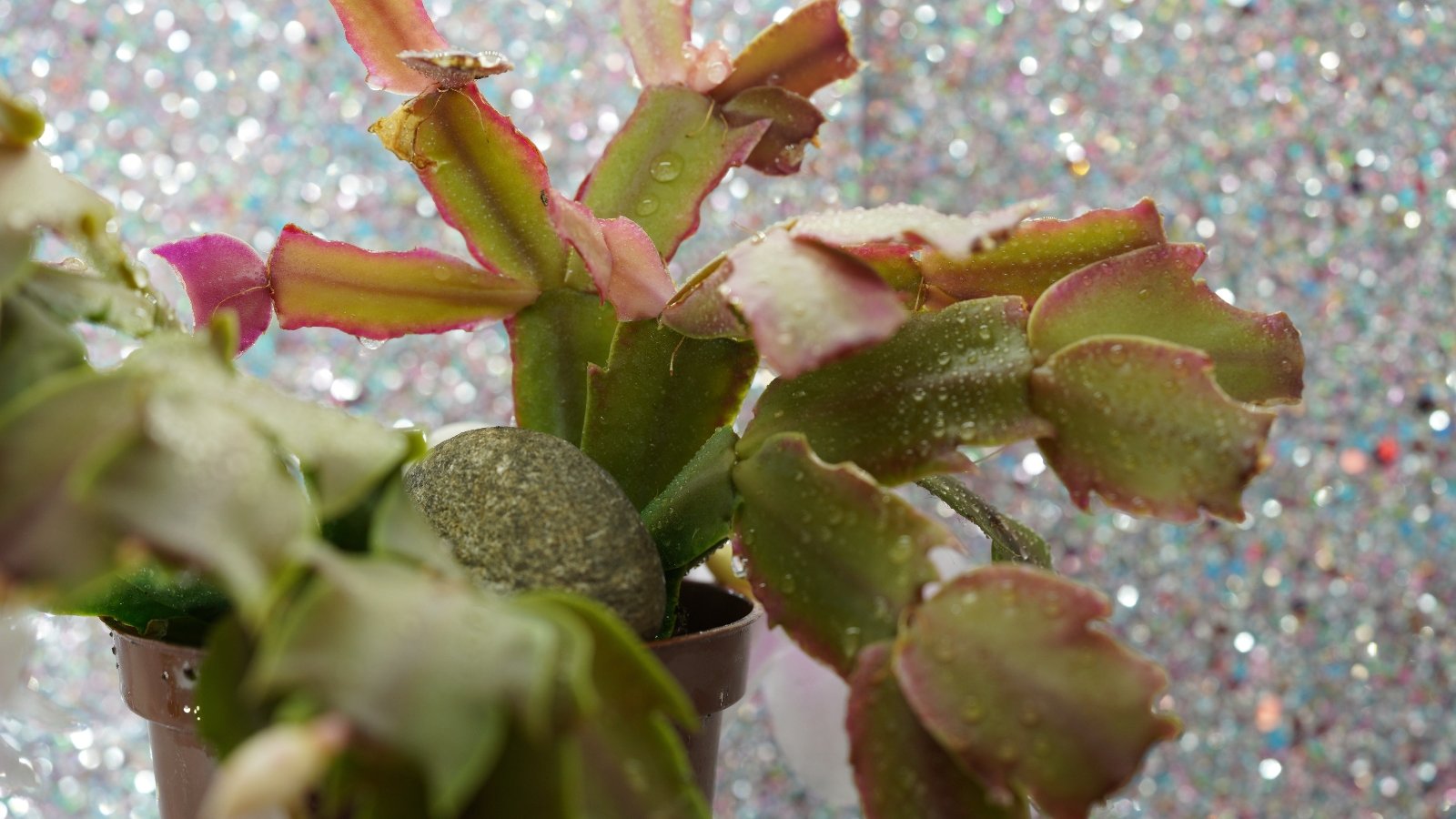
Underwatering causes the epiphyte to enter preservation mode. The lack of available moisture makes phylloclades shrivel and become less fleshy due to water loss. In a state of conservation, stems wilt. Buds drop as energy goes to roots and stems rather than reproduction (flowering).
If the soil is dry beyond one inch depth, give it a good watering and begin a regular schedule as warranted by drying out slightly between sessions. If remedied in time, stems will rehydrate.
Discolored Leaves
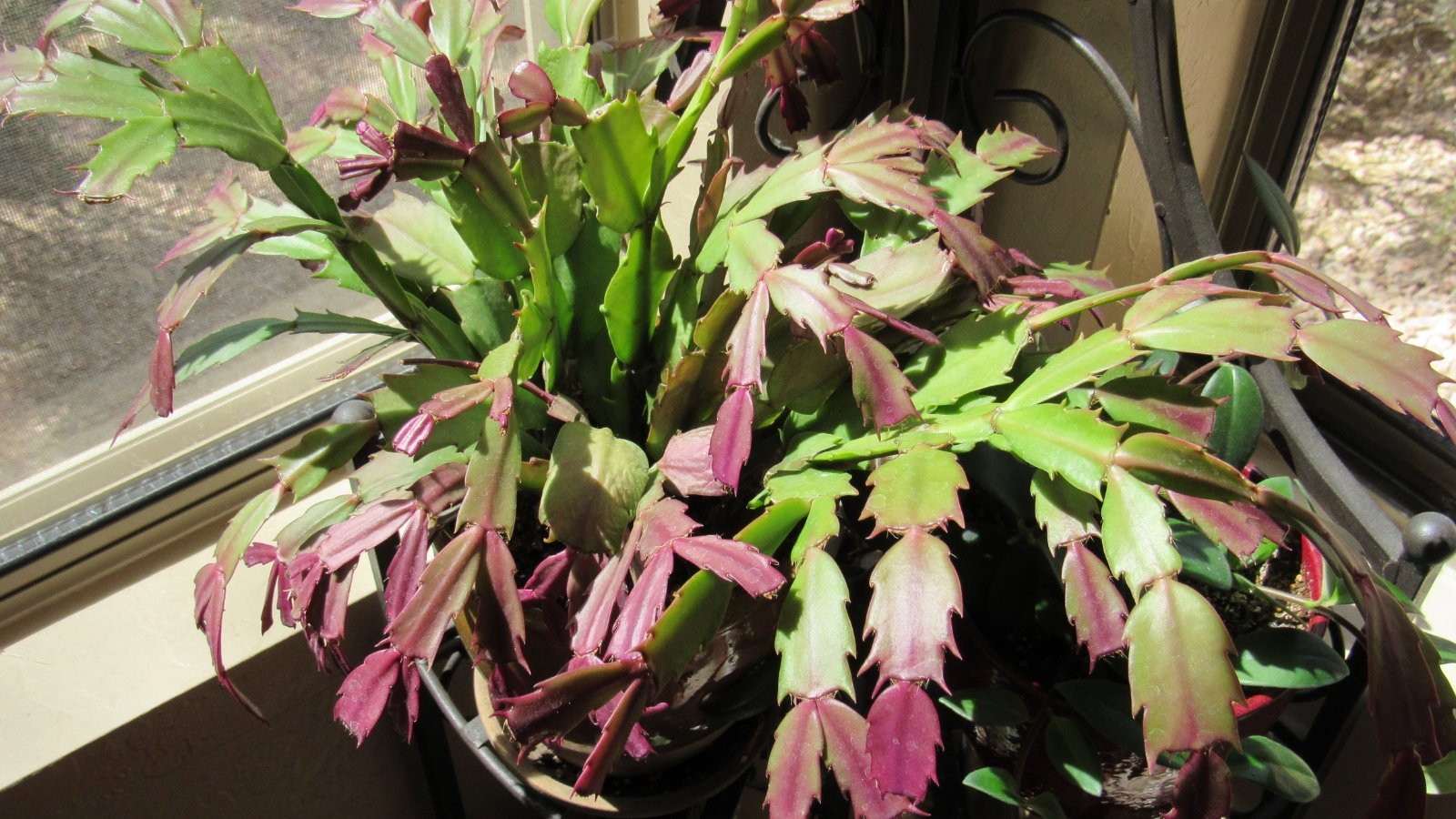
We usually see rich green phylloclades that range from dark to grassy. Some varieties have fresh growth that emerges brighter green or with red tinges. Even others, like “Cristen Aurea,’ have bright gold to chartreuse stems.
Outside of varietal attributes, leaf discoloration is a common response to cultural conditions and changes. Caught early, these missteps are often easy to remedy.
Pink and Red
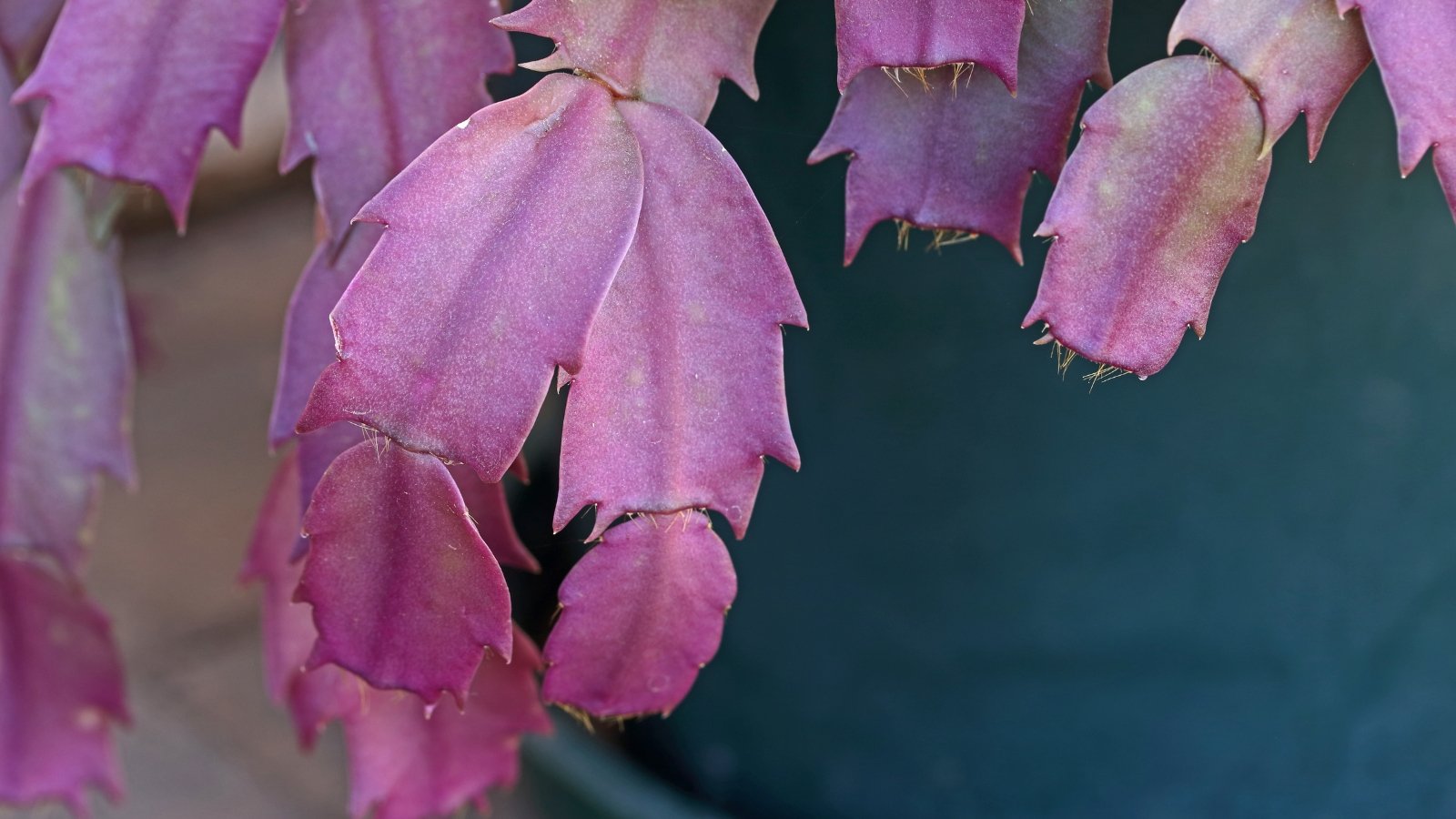
Many of us will see stems turn shades of pinky-purple-red as seasonal conditions change or as we move a pot around. This blushing is usually a response to temperature (too cool) or lighting (too much). This isn’t a “bad” kind of stress and even adds pretty foliar interest to your Christmas cactus.
To level the coloration, keep the cacti near their ideal temperature range. Don’t let them dip below the low 40s (~4°C) before bringing them indoors. In their mountain forests, ideal daytime temperatures are between 70-80°F (21-27°C). Nighttime temperatures are around 55-60°F (13-16°C) in winter. Average home temperatures are usually fine to support their development.
The best sun exposure is bright, indirect light. Situate them near a bright window to avoid scorching the leaves while still providing enough energy for growth and flowering. Too much direct sunlight for these canopy-dwellers, especially afternoon rays, causes discoloration and damage.
Yellow
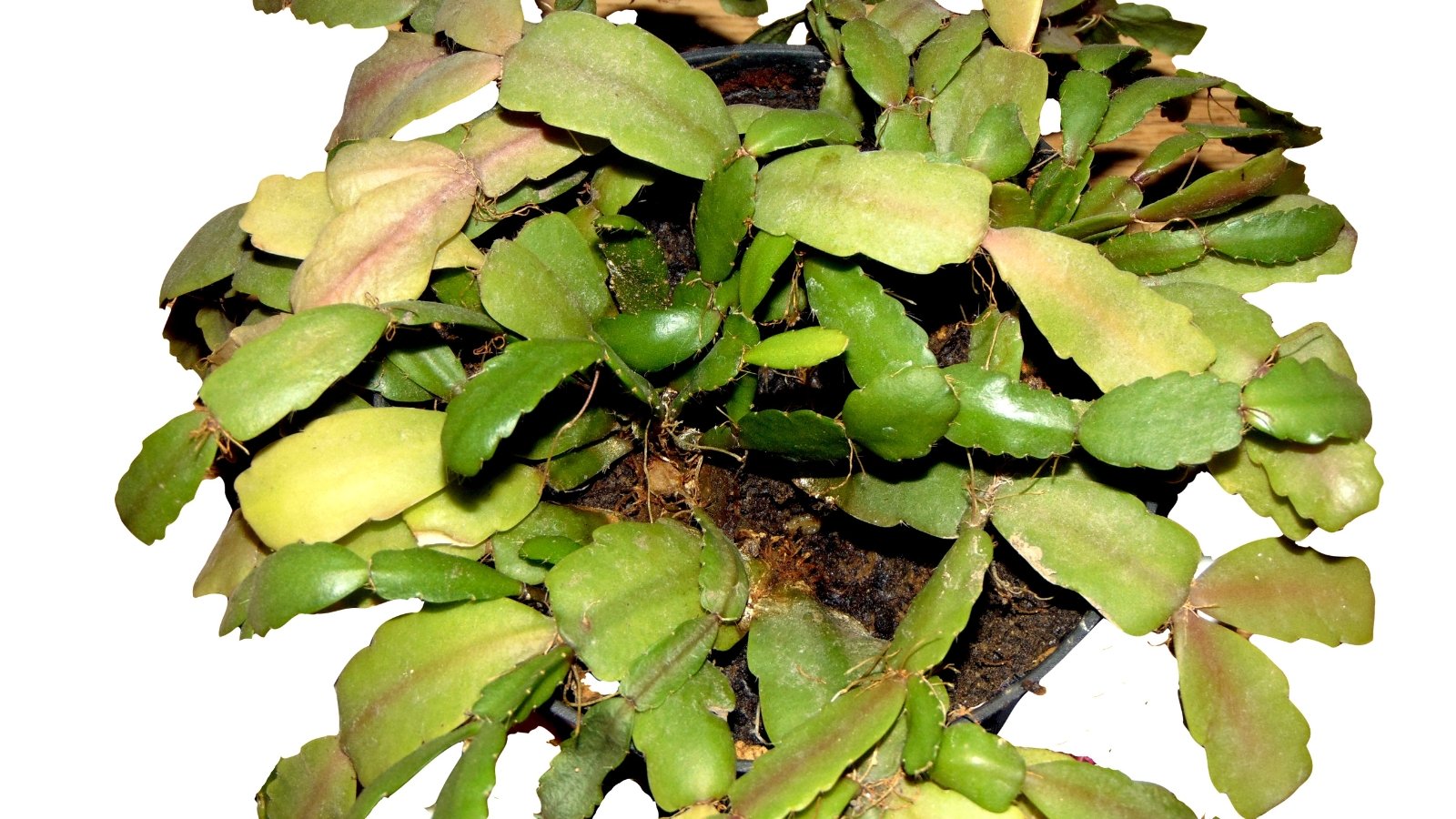
Yellowing Christmas cactus foliage is a signal that a new stress is in progress. It may have a been a case of over or underwatering, easily corrected by allowing the soil to dry slightly between watering sessions and getting on track with a consistent schedule.
Less often, yellowing stems indicate a nutrient deficiency. A balanced fertilizer during the active growing season (warm months) can help. Apply an organic houseplant formula at ¼ strength every other watering session. Stop fertilizing by September to promote budding and strong stems. Pick up fertilizing again in early spring after plants rest post-bloom.
If the segments look pale and slightly yellow, it may be as simple as moving the container toward more light. A brighter exposure can reverse the palor. Take care not to overcorrect by moving to direct sunlight.
Brown
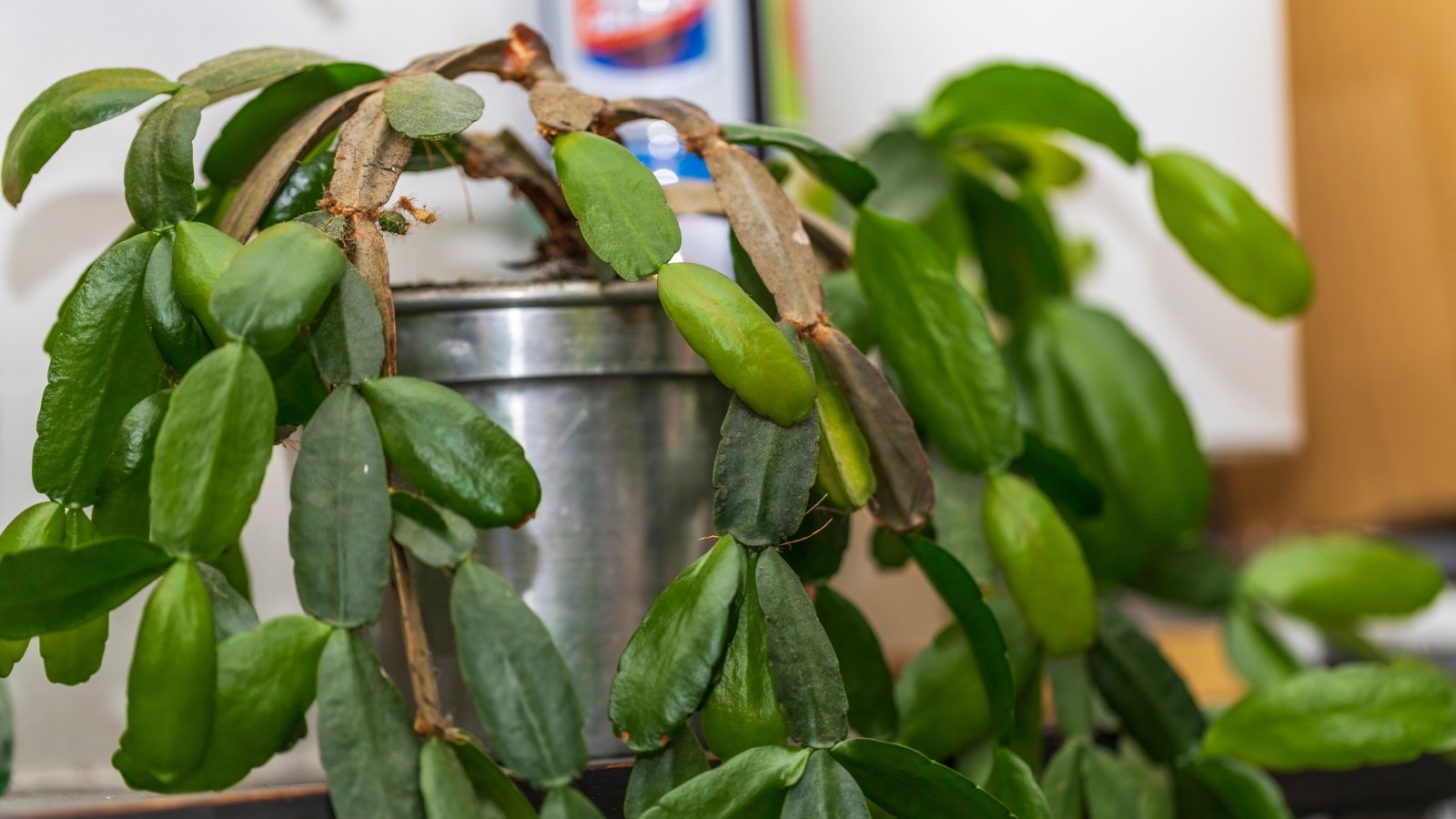
Brown stems indicate a problem is well underway, but it may be reversible. First, cut off any brown sections to a healthy joint. Investigate the soil and roots to determine if it’s a response to watering or potentially another cause. Regular under and overwatering eventually cause browning and dieback.
Too much sunlight, too, can cause browning or blisters. Direct rays sunburn the leaves and scorch damages their tissues.
Dropping Buds
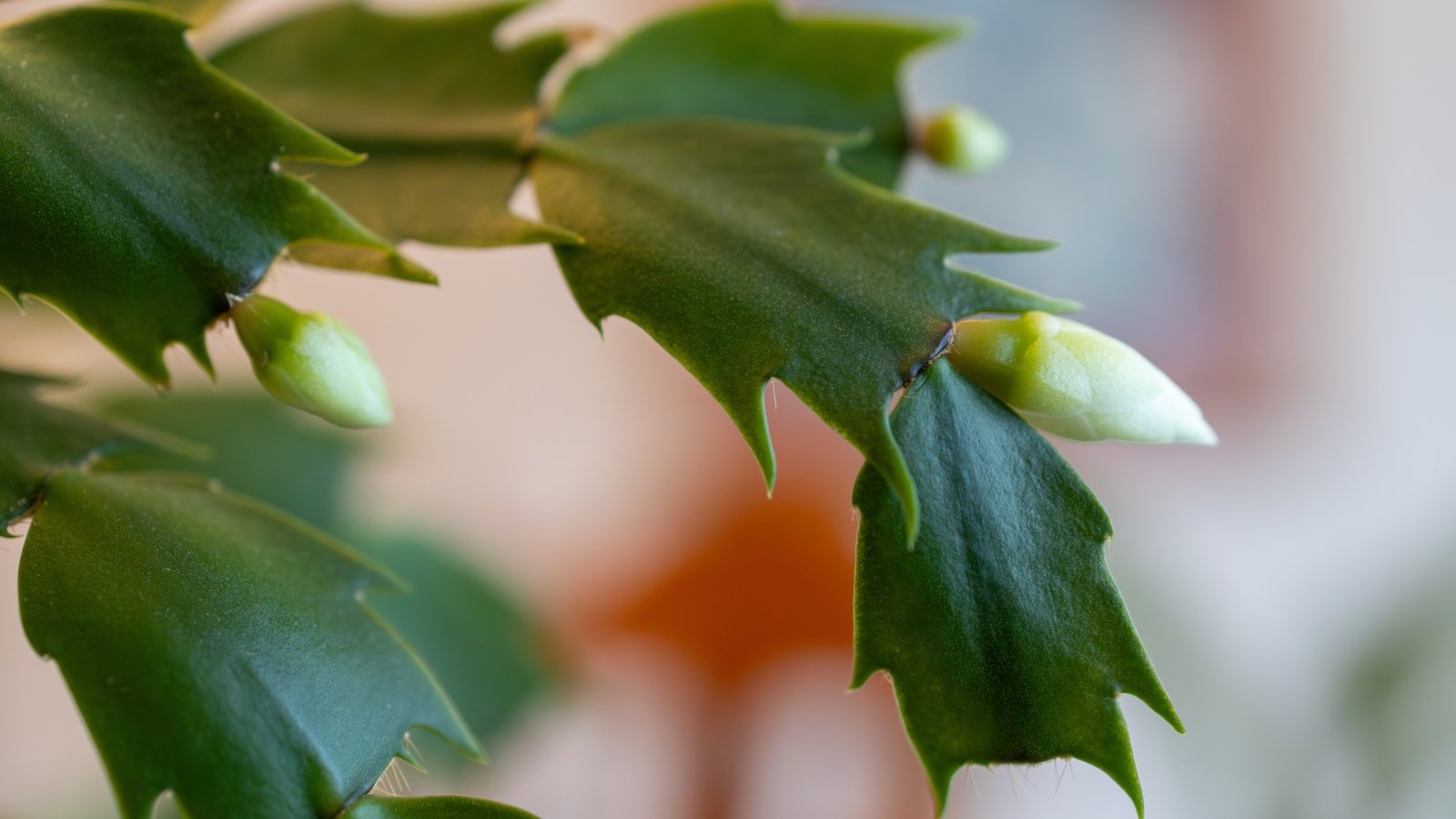
Bud loss relates to changes in optimal cultural conditions. Temperature fluctuations are a leading cause, especially as we move plants this time of year. They benefit from a consistent location with moderate temperatures and ample light.
Christmas cacti also benefit from cool nighttime temperatures to initiate flowering, but quick extremes like hot or cold blasts halt budding. Keep them away from drafts like heating and air vents, open windows, space heaters, and fireplaces.
Warm nighttime temperatures (70°F or 21°C or higher) for extended periods in fall limit bud development or cause young buds to drop. Situate pots in a cool room or near a window for lower temperatures.
Not Budding or Flowering
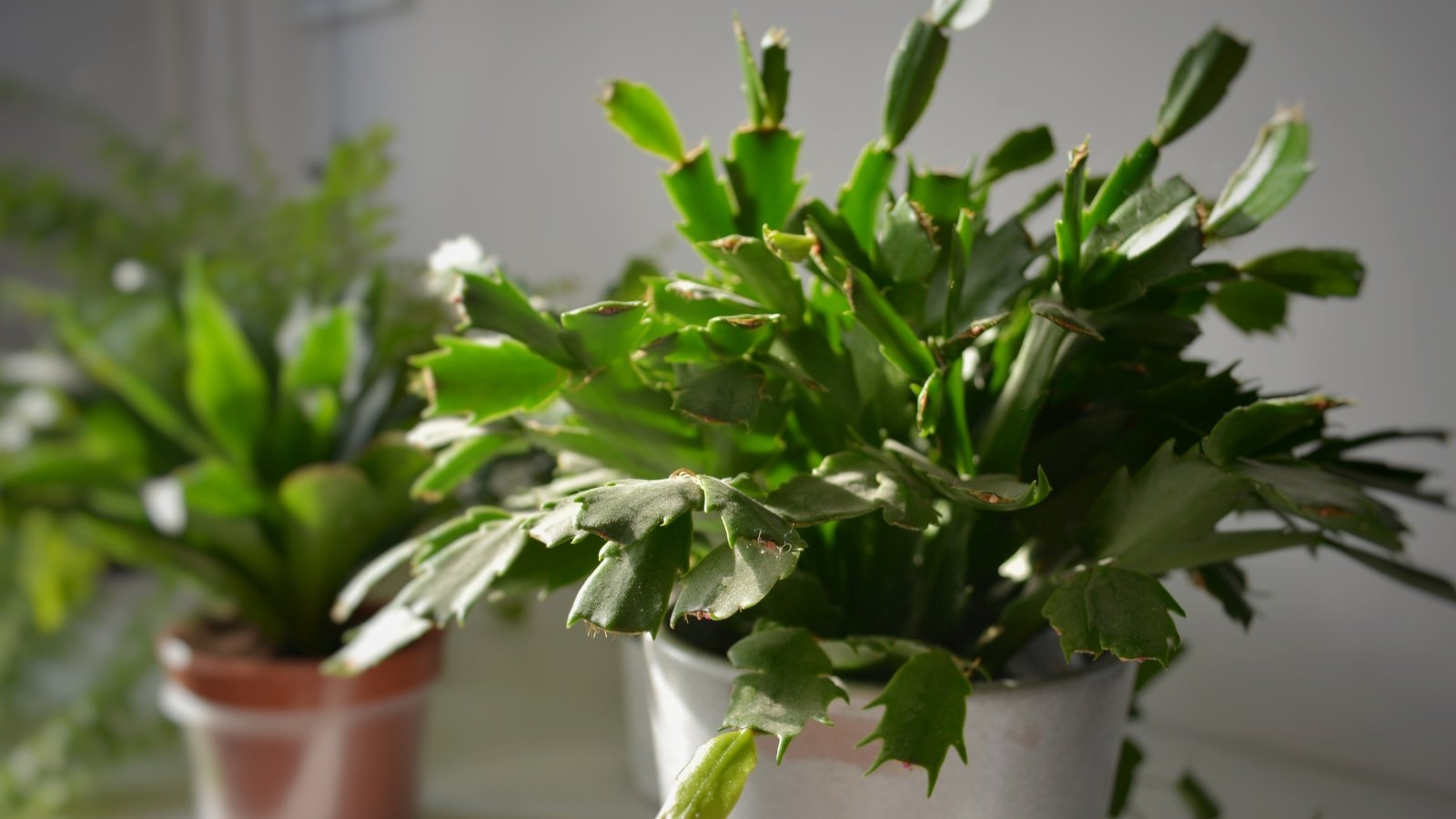
Christmas cactus plants respond to shorter day lengths (and longer nighttime darkness) to develop strong buds, but they may not flower if they are stressed from improper light or excess nutrients. Along with cool nighttime temperatures from September on, they need 12 hours of darkness for the best budding. Turn off the lights in the evening in their growing room.
Overfertizing is another reason for lack of flowering. In nature, the cacti receive nitrogen through raindrops and other nutrients from decaying plant material on trees. Houseplants get a boost from fertilizer, but an overload or late application of nitrogen limits budding. The excess promotes new growth instead. Avoid fertilizing from late summer until new growth resumes in spring.
Leaf Drop
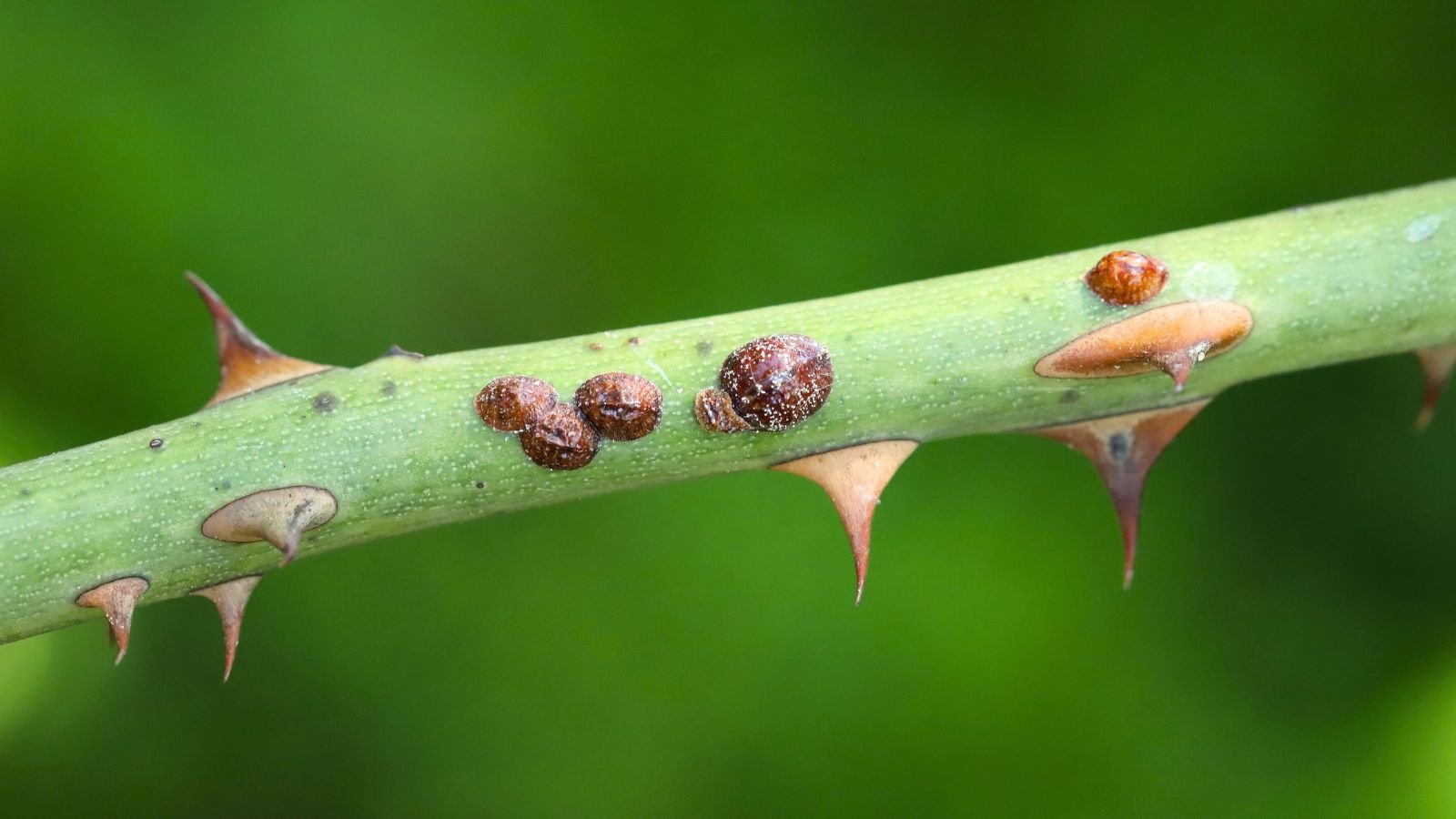
If you’re noticing segments of your Christmas cactus dropping, and you already checked all the primary growing conditions, pest stress is likely the culprit. While infrequent problems, scale, mealybugs, and spider mites are common in houseplants and may take hold.
Scale pierce leaves and stems to feed on sap. You may notice a sticky residue. The little legless blobs usually appear on the undersides of stems as black, gray, or silvery dots. They may yellow and drop, dying back in heavy infestations. Remove affected segments to healthy growth.
Mealybugs are soft-bodied and look like tiny tufts of white cotton on segments. Infestations are visible by the insects themselves and by yellowing, wilting, or stunted leaves.
Spider mites are common in houseplants and live on the undersides of leaves, showing up as webbing and light yellowing of leaf surfaces.
Scale, mealybugs, and spider mites gravitate toward specimens stressed by under or overwatering. For small populations, run branches under a stream of water to displace the pests. Dab them with a cotton swap soaked in isopropyl alcohol. Insecticidal soaps and horticultural oils are effective as more potent treatments.
Withered New Growth and Exposed Roots
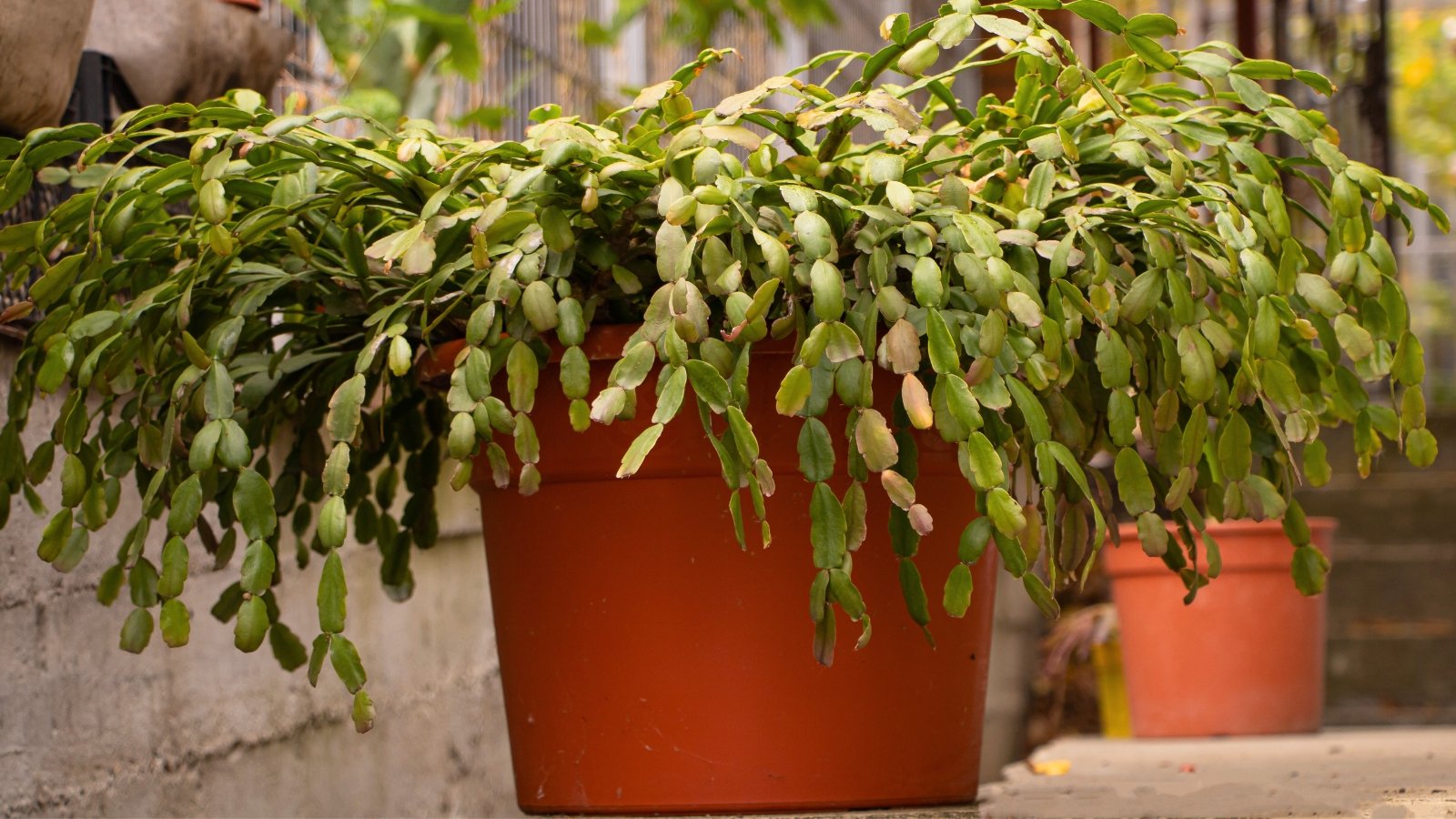
The epiphytes like their quarters a little tight and require repotting infrequently. They need slightly crowded roots to produce blooms. Crowding signals that growing room is exhausted and it’s time to reproduce.
Christmas cactus lives for years in a single container. Indicators of reduced vigor, halted new growth, lack of budding, bud drop, and withered young stems may show a need for a larger container. Roots reaching through drainage holes or popping up above the soil surface are another sign. Stems may wilt and wither, and potting mix will dry out quickly.
To prevent added stress, the best time to repot Christmas cactus is right after flowering, during dormancy. Transplanting at other times can affect growth and flowering.

